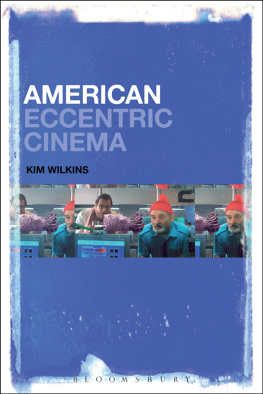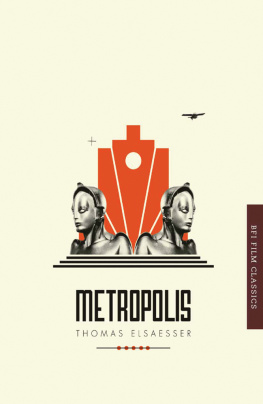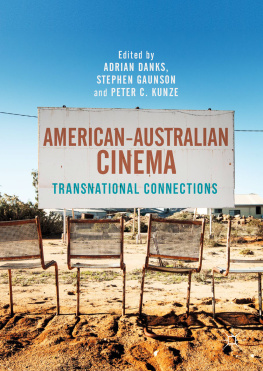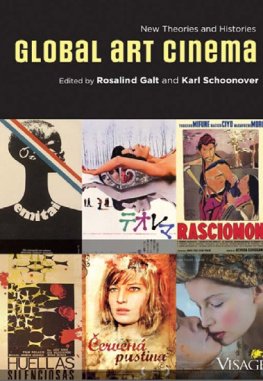European Cinema as World Cinema
A New Beginning?
What is European Cinema Today?
What is European cinema? We no longer seem to know. The very idea of it has slipped between the declining relevance of national cinemas, and the emerging importance of world cinema. A few decades ago, European cinema connoted films mainly made in Western Europe and based on its dominant postwar national and transnational traditions of neo-realism, politically or popart inspired new waves. It named an auteur cinema that drew on national (literary or theatrical) traditions, whose style was that of an art cinema, with psychologically complex protagonists, often the alter egos of the director, and thus inviting expressive-autobiographical interpretation. Add the word popular, and European cinema refers to the sum total of the nationally specific, but widely seen commercial films of a given country. Popular European cinema featured recognizable national stars and concentrated on proven genres such as Austro-German costume dramas, French polars and Italian comedies, British CARRY-ON films or German detective films. European here helps distinguish these genre cinemas from Hollywood, without implying transnational, i.e., inter-European popularity. On the contrary, many genres, notably comedies, did not export well, and only very few stars became familiar across the national borders: Romy Schneider was popular in France (not least because of her marriage to Alain Delon), Louis de Funs comedies became hits in Germany and Greece, Fernandel did well in Italy (as an Italian priest), but a French superstar like Jean Gabin did not succeed in Germany, which had its own Gabins: Gert Frbe, for instance, and later, Mario Adorf. The biggest German star for at least five decades, Heinz Rhmann, has remained totally unknown elsewhere; also despite their trying Hardy Krger, Karlheinz Bhm and Horst Buchholz all have been unable to establish enduring careers in Britain and Hollywood.
On the other hand, European just as often identifies films made outside the commercial rewards and constraints of the box office. Instead, they are financed through the nationally specific funding schemes of government subsidy, like the French avances sur recettes, and public service broadcasting funds, like the German television framework agreement. To some, this is a necessary protective measure to safeguard the creative talent of a country; to others it is a source of cheap television programming, and to still others, a trade barrier stifling enterprise and competition. In the 1970s, European cinema also referred to politically or aesthetically avant-garde cinema with minority appeal: films that were prepared to take formal risks, or practiced a politics of intervention in a society felt to be stagnant and opposed to change. Jean-Marie Straub and Daniele Huillet were considered European filmmakers, not least because they came from France, worked in Germany, and finally settled in Italy. Jean-Luc Godard's Swiss-French background predestined him for a pan-European outlook, and in a film like PASSION, he gave roles to actors from at least four different European countries. Wim Wenders is considered European, and not only because he has shot films in France and Portugal. So, too, is Peter Greenaway, a self-exile on the Continent. Greenaway and Godard examine the interface between cinema and painting, or between architecture and cinema, while Bergman, Rivette, Rohmer, but also Fassbinder, Franois Ozon, and Lars von Trier often have the theatre as their scenic inter-text. Descriptions do not amount to definitions, and the label European once more seems to make more sense when applied from without than when given substance from within.
It suggests that, perhaps, it is time to look at European cinema neither from within nor from without, but as part of a more dynamic as well as fluid totality that of world cinema. But before examining what the term connotes for the new century, I want to summarize for one last time some of the problems encountered in the study of European cinema.
The Auteur, the Nation and the Avant-garde
As we saw, a look at the readers and handbooks makes clear how impossible it is to speak of European cinema, while also confirming how inevitable it is. In this conjuncture, several points emerged, not as criticisms of specific authors or editors, but as structural constants that sustain the paradox. First, there is a reliance on categories, such as auteur cinema and art cinema, which are treated as first-order realities, when (I have argued) they function more likely as second-order compromise formations.dualistic and invariably antagonistic perception of the relation between European cinema and Hollywood is also taken for granted. It either functions as first cause (Hollywood poses a permanent threat to the existence and viability of cinema in Europe), or as an explanation for various shortcoming and failings: European films are made on small budgets because the Americans monopolize the theatrical release of films and thus block the box office, or European-made films are shunned by European spectators, because their tastes have been ruined by American blockbusters.
If the auteur, national cinema and hostility to Hollywood are the three most central complexes that stand in the way of a new understanding of European cinema, there are further issues I have named. Some are no longer quite so contentious, because their ideological function has become more evident, and therefore just a little less tenable. For instance, the a priori valorization of realism in European cinema as the only valid ontology of the (photographic) image, based on its particular truth-status of time (the indexicality of the moment) and iconicity of place (what appears in the image corresponds to a once-existing pro-filmic reality). The reliance on realism in European cinema used to go hand in hand with a character psychology based on individual subjectivity, interiority, spiritual alienation, and social anomie at the expense of fantasy, interpersonal conflict, action, and interactive communication, all seen as either commercial and low culture, or typical for Hollywood (action, spectacle). The Dogma manifesto has, by seemingly re-affirming realism as Europe's doxa, shown how much in fact it had by 1995 become a mere set of conventions that could be performed, prescribed, or abrogated (thus implicitly doing away with any special ontological status). Similarly, directors as different as Tom Tykwer (WINTER SLEEPER, THE WARRIOR AND THE PRINCESS, RUN LOLA RUN), Roberto Benigni (LA VITA E BENA) or Jean-Pierre Jeunet (LE FABULEUX DESTIN D'AMNE POULAIN) have made powerful and striking films in modes that range from fantasy to fairytale and live-action animation, without their films being either less European or less concerned with important issues.
To avoid too many misunderstandings, I want to clarify once more why I believe it makes more sense to suspend the traditional definition of European cinema as an auteur cinema, as a national cinema, and as implacably opposed to Hollywood, and why I have been treating them as second-order categories. The auteur first: there is no doubt that a long line of outstanding directors has shaped the identity of what we understand as European cinema. From Fritz Lang to Jean Renoir, from Sergei Eisenstein to G.W. Pabst, from Luis Bunuel to Roberto Rossellini, from Ingmar Bergman to Jean-Luc Godard, from Michelangelo Antonioni to Joseph Losey, from Bernardo Bertolucci to Neil Jordan, from Robert Bresson to Mike Leigh, from Carl Dreyer to Lars von Trier, from Agns Varda to Krzysztof Kieslowski, from Wim Wenders to Jean-Pierre Jeunet: each national cinema has in crucial ways across the decades taken its identity and international face from the uniqueness and distinctiveness of its directors vision. But the claim to such monopoly also comes with historical baggage and political assumptions that once in a while need to be unpacked. Modeled as the film








